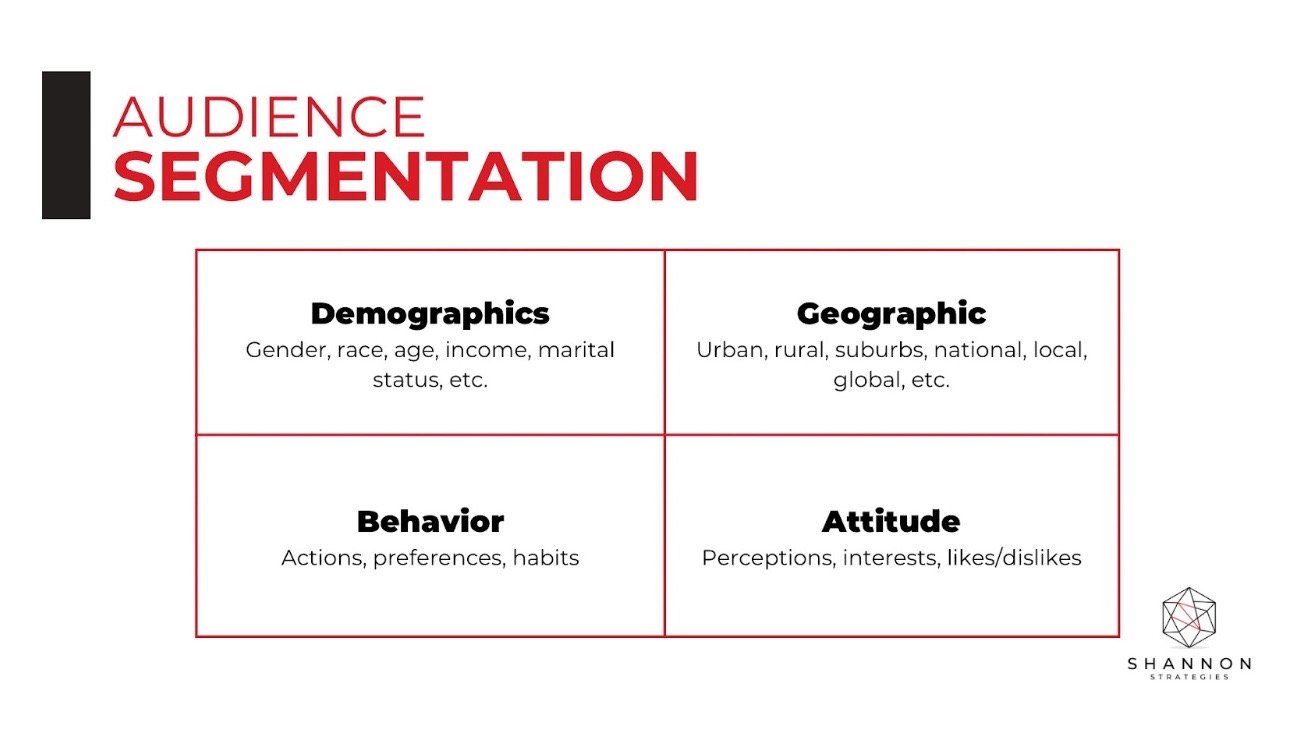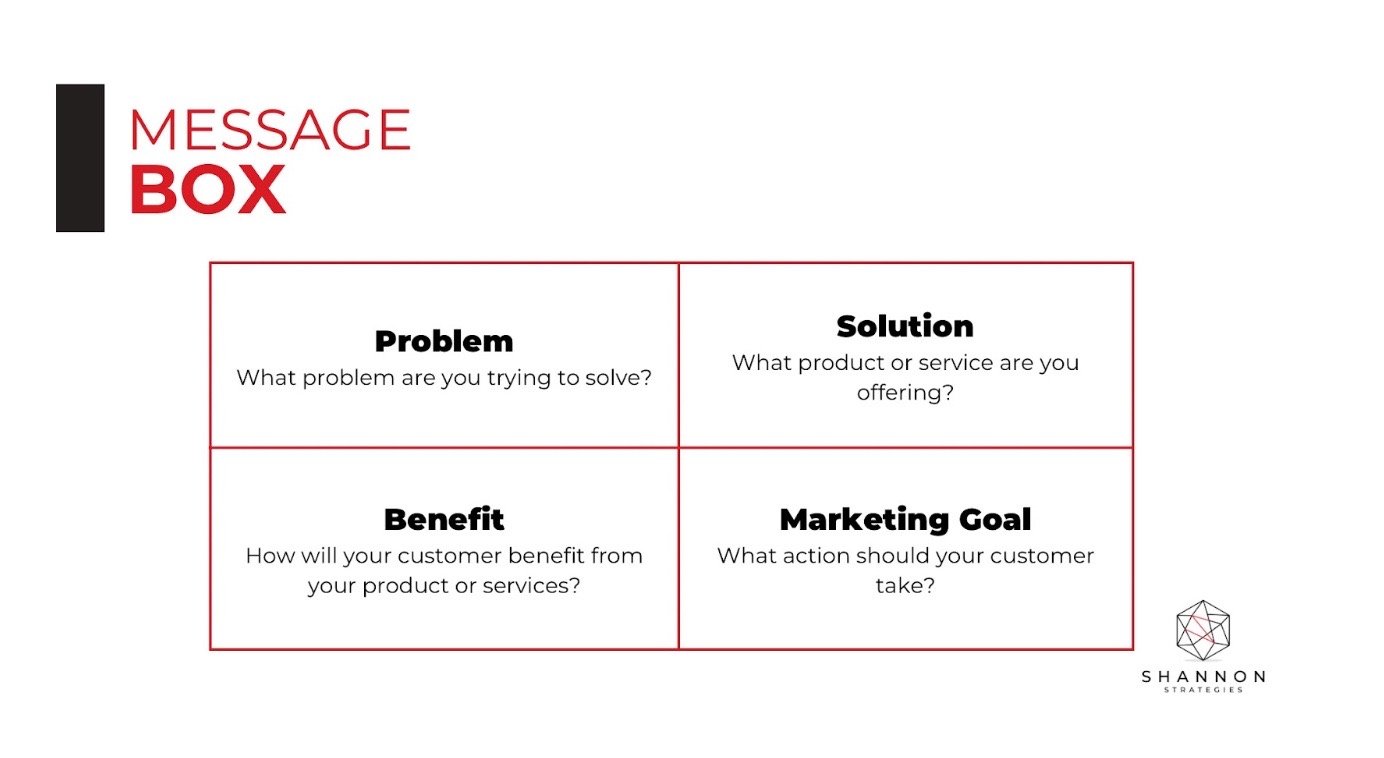Marketing Essentials
I presented on Marketing Essentials earlier this spring for small businesses through the Office of Minority Business Development. It was a great opportunity to interact with other small business owners and provide real-time insights into building a brand.
As a business owner, I understand the time constraints of managing budgets, staff and operations while also ensuring the delivery of quality services. Sometimes, marketing and branding aren’t on the list of priorities when you need to make sure payroll is covered. Even as a communications firm, we understand those challenges. We’ve previously worked with consultants to help manage our social media pages to maintain consistency and build engagement. Now, we have weekly meetings solely dedicated to business development.
Often, businesses know what they need to do but don’t have the tools or resources to get started. This may result in spinning in circles instead of making forward progress. However, marketing is an important part of business growth. Here are tips that are foundational in establishing a unique product and service that meets consumer needs.
What is marketing and why is it important?
Marketing is the process of making your products and services attractive through creative and compelling messaging, generally consisting of the four Ps:
Product: The goods or services your business offers to meet a need.
Place: How customers find and access your products and services.
Price: The cost of your products and services.
Promotion: How to create brand awareness of your product or service.
There are different types of marketing, including:
Print
Video
Internet
Social media
Events
Website and SEO
Email
Marketing creates awareness about your company's solutions and helps to engage existing and potential customers. It’s also key to establishing and strengthening your business’s reputation.
Step 1. Define the product or service
Complete a marketing matrix and write it down. Grab a pen and paper, or start a Google Doc to define your product, place, price and promotion. Use the matrix below as a template.
This will be your foundation for understanding your audience and creating a message to reach those customers.
Total time = 30 minutes
Step 2: Identify marketing goals and objectives
The purpose of marketing is to reach your target audience and communicate the benefits of your products or services. The marketing matrix helps organize this information in one place.
There are four key communication goals when engaging people:
To inform: Educate and raise awareness on an issue, event or current state of affairs.
To persuade: Present arguments to move, motivate or change minds.
To request: A call-to-action to connect, solve a problem or make a specific ask to do something.
To build relationships: Develop trust, credibility, respect and open communication through consistent and honest engagement.
Establish clear goals and measurable objectives to determine the best tactics to grow your business and reach those customers and clients. For example, ask yourself:
Do you want to improve brand recognition?
Do you want to increase sales and revenue?
Do you need to demonstrate technical expertise?
Does your company have a social media presence or need to build one?
Do you have a small following and low social media engagement?
Is your website outdated, not functioning or you need to build one?
Where is your website ranking in search results?
Do customers have a difficult time finding your services and contact information?
Do you want to generate new leads?
Do you have low customer satisfaction and retention?
It’s possible to tackle each of these priorities with clarity on what you need to accomplish and when. Remember, Rome wasn’t conquered in a day.
Write down three marketing goals for the year and then measure progress every quarter.
Total time = 1 hour
Step 3: Define your audience
Here’s the thing - everything ain’t for everybody. If you own a local bakery in San Francisco, then your customers won’t be located in Miami.
In business, you need to know your target customers and clients to reach them.
We do this by building customer profiles to understand our target market. Use the audience segmentation matrix to identify customers and clients based on where they live, behavior, attitudes and demographics.
At Shannon Strategies, our clients make an impact in the social sector, therefore we work with nonprofits, progressive public servants and political candidates, small businesses and leaders whose work will uplift marginalized communities.
Find your people and work to connect with them!
Total time = 2 hours
Step 4: Develop a message
A message answers the “why.”
It is the core values and ideas your campaign, product or service conveys through words, visuals and stories.
Here’s how to craft a message:
Who: Define your audience
Why: Create a value proposition
What: List solutions you offer
How: List benefits and improvements
There are several ways to communicate this message — testimonials, brochures, videos, etc. However, the most important thing is to tell me why I need to buy your product or use your services.
For guidance, use this message box and the marketing matrix to identify how your company is meeting a need.
Total time = 1 hour
Step 4: Build a toolbox
Once you have your story and message, make sure it's reflected in the marketing campaign to reach customers and generate business. List all of your current marketing assets, and then list the assets you’ll need to achieve your marketing goals.
Here’s a list to get started:
Visual branding: logo, social media graphics, brochures/flyers, photos and videos.
Digital media: website, blog, email marketing, social media, texting, photos, videos, podcasts, etc.
Earned media: press releases, op-eds, letters to the editor, press conferences, PSAs, etc.
Stakeholder engagement: recorded webinars and trainings, events, surveys, etc.
Remember, content is not limited to one channel. It is shareable and can be repackaged in many ways.
Total time = 30 minutes
Pro-tip: Tools and Resources
Design
Email Marketing
Website Creation
Social Media Management
Stock Photos and Videos
Video Editing and Captions
Step 5: Measure Progress
Set measurable objectives and use analytics to see what’s performing best.
Establish a baseline: Write down current social media followers, site traffic, email open rates, etc.
Ask for feedback and testimonials: Encourage customers to leave reviews on Google, Yelp, Facebook, and LinkedIn.
Add a recurring quarterly task on your calendar: Spend one (1) hour reviewing analytics:
Review social media analytics - engagement, followers, likes, shares
Track website visitors - check the volume of visitors on your site
Open rate - View how many email recipients opened an email
Count the number of new testimonials and reviews.
Summary
Use the following steps to create a marketing strategy that will increase brand awareness, build customer loyalty and generate revenue:
Set goal: What do you want to accomplish?
Identify audience: Who are your customers and what do you want them to do?
Create content: What’s your message? What tools are available to tell your story?
Be strategic: What’s the best platform to share your message?
Make adjustments: Is the marketing working? If so, keep going in that direction. If not, pivot to something new.
Need branding and marketing help? Contact us for a consultation.




